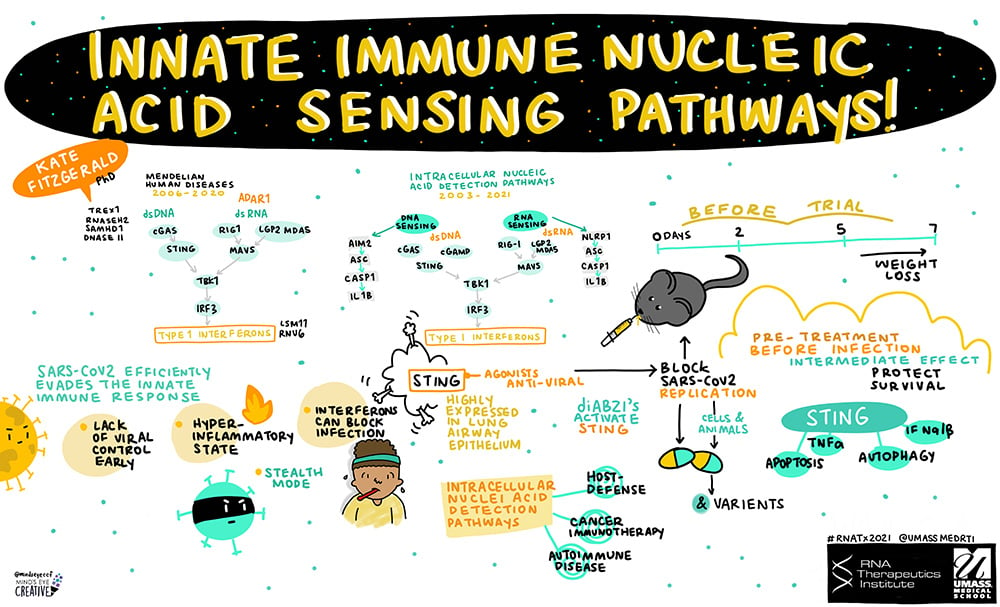Nucleic acid receptors

A central theme that has emerged from our work over the last decade is that nucleic acids represent a primary means of alerting the immune system to the presence of pathogens.
Nucleic acids are not unique to pathogens as both beneficial commensals and our own cells contain these molecules. We believe that the location of nucleic acids allows the immune system to discriminate friend from foe. Accumulation of nucleic acids in cytosolic compartments is perceived as a danger signal during infection. Pathogens frequently infiltrate the cytosolic compartment to establish infection and evade extracellular defenses. Once inside, nucleic acids from microbial genomes or from their replicative processes activate cytosolic sensors.
We are actively engaged in defining the receptors and pathways involved in detecting foreign nucleic acids. Mis-localization of our own nucleic acids can also drive inflammation (e.g., in autoimmune diseases such as lupus). Another major focus of our work in this area aims to understand how these nucleic acid sensing pathways contribute to the pathogenesis of autoimmune diseases such as SAVI (STING-associated vasculopathy with onset in infancy), lupus, inflammatory bowel disease, and arthritis.